Introduction
Art has always been a matter of burning discussions and debates over their origins and meanings. Moreover, the art works: murals, paintings, sculptures always symbolize the time frames and culture they were created within. It is a pleasure to introduce Mary Cassatt’s painting The Reading Lesson that symbolizes Cassatt’s personal objectives and the influence of times and the place – France. As such, the focus of this paper will be unveiling the true motifs of Mar Cassatt’s works, namely the painting called The Reading Lesson.1 This paper will elaborate on amazing American art figure of the French society of the nineteenth century. Mary Cassatt’s feministic views will be examined and it will be decided if she was a feminist and why critic doubted she was due to the paintings of domesticity. The Reading Lesson is the masterpiece that enhanced the role of women as mothers within the Parisians society of the late nineteenth century and reflects the rebellious emotions towards the nature of the society (Fig 1)
The Reading Lesson’s Historical Content
In order to explain the historical context it is necessary to recall France of the late nineteenth century. Although it is common to imagine France, Paris as the most romantic and harmonious place in the world, France was nothing alike during that period. Unfortunately, or on the contrary advantageously, the country was involved in women’s protests against their role in the society2. (Goubert, p. 125)They no longer wanted to be housewives, they were willing to indulge in the public sphere and make their female art and social contribution. Along with that, France was far from experiencing a population growth. On the contrary, those were the years when France saw a rapid growth of divorce rates, family bounds did not matter that much anymore. It is necessary to mention that “a liberated woman was the same as a loose woman” (Getlein3, 7). This was an incredible period in French history due to the changes of the family heritage and family culture to more of contemporary like. Moreover, that period was significant for the women’s decisions not to take up motherhood because of the possible difficulties that are likely to occur, women started feeling motherhood to be a trifle and unnecessary affair. Birth rates started decreasing due to increasing abortion rates, hence French population declined. Broude speculated in his article Mary Cassatt: Modern Woman or the Cult of True Motherhood?4 about “woman’s desire for autonomy and access to the public sphere” (p. 2) rather than implementing the initially meant role of maternity.
Feminist Reputation Undermined
It appears that Mary Cassat used to undermine her reputation as a feminist in the late nineteenth century. Apart from her overall image of a feminist it seemed like she indulged in painting the mere domestic roles of women, as if saying that women should and ought to take up their domestic roles. This was expressed by many critics, such as Norma Broude, speculating that Cassat positioned herself s a staunch feminist, though her paintings contradicted that image. This was considered to be an attempt to hinder the feminist movement in France in nineteenth century. Mary Cassat was hard to understand for the critics due to her contradictory expressing and the art she provided. Although it was the twentieth century in America that was known for may civil rights movements, in Europe the movements started emerging the century earlier, which is significant for the role of women in society. They started rethinking the feminist goals, women thought they were to debunk the myths and stereotypes as per the roles as mothers and wives. However, it seemed like Cassatt was the one to encourage women via her paintings to accept women’s roles as mothers, wives, and housekeepers (Fig. 2). Nevertheless, there were critics, like Witzling5, who believed that Cassatt’s paintings were uncharacteristic of her, because she was a feminist.
The True Feminist Power of Paintings
There is a significant point of view about Cassatt’s paintings that makes an opinion about her being non-feminist vanish at once. Why not look at Mary’s message as the most feministic in the history of art? She was reinstating domesticity and this is the important facet of feminist movement that had never been known before. Art Historian Nancy Mathews6 speculates that Mary Cassatt used to be “an individual always rising to meet new challenges, and we see within her the rare original ingredient that enabled her to leave a legacy that transcends the particularities of her time and speaks quietly but effectively to our own” (p.7). What this means is that Cassat was a marvelous woman of her times. It is unbelievable how different historians see her character as per the impact on feminism and art in general. Nancy Mathews is the one who claims that Cassatt was a woman of her strong beliefs, who stood for those beliefs no matter what, and hence the strength and power she radiated were equal to the new stream in the feminist movement. Cassatt used her paintings, her love for art in order to have an impact on Paris and those days’ social norms.7
Her depictions of mothers were great and meaningful. Although it is considered that the paintings she used to provide society with were somewhat contradictory to the nature of a feminist fighter, yet she lent a great hand to feministic moods via enhancing the importance of the role of a woman as a basis and the beginning of life. (Fig. 3) Moreover, it is important to mention the notion of a woman as a knowledge holder and conveyer. Cassatt’s images of mothers were revered and respectful, what is more important – she manage to bring back the importance of a woman as a life giver. Moreover, being a feminist, Cassatt made it possible to prove through her paintings that the most essential role of women in society should not be underestimated – the role of holding the society and family together. Even those who overlooked the role of women were subconsciously moved by the intimate interactions of mothers with their children because the paintings did bring value to maternity. (Fig. 4)
The Reading Lesson Style
As such, it is remarkable how Cassatt depicts her mother and a daughter in The Reading Lesson. There is nothing more touching and moving than a mother tutoring her daughter or a son how to read. In the picture we can explicitly see the intimate connection of a mother and a child. Mother’s instructive gesture8, as if giving a child an attempt to read on her own is significant as per Cassatt’s idea of mothers’ dominance over men and knowledge conveyers. (Neal9, p. 198). The painting is a perfect implementation of Cassatt’s views as a feminist, it is a very strong support of her views that amazingly interrelate with her politics: women’s domesticity and at the same time dominance. Whether it is because Mary was full of tender emotions towards kid or simply because she never had her own children, (Venezia10, p. 4) her feminist works are full of unbelievably great images of mothers with their kids. (Fig. 5)
Mary Cassatt’s Feministic Views Unveiled
In terms of Cassatt’s views, it is important to understand that she viewed mothers’ role beyond the patriarchal duties, which is true today, too. To be more exact, she advertised women’s role as mentors as in Banjo Lesson. (Fig. 6) Moreover, her later works describe more clearly the work of mothers as educators, which is vitally important nowadays as well. The position of women as instructors, not the nursemaids is vividly depicted in Family Group Reading (Fig. 7). This art work symbolizes the physical unfolding of literate knowledge for a child. The art critic pointed that in the picture “child looks with interest at the pages and ‘learns’ to hold the book by placing her hands over those of her mother” stressing on the issue of instructive gestures of a mother (p. 118). Moreover, not only the instructional gestures play a great role in Cassatt’s paintings. Particularly Family Group Reading is a wonderful representation of mothers’ kind control over the children’s development. It is seen through the hands of a kid in the hand of mother. Moreover, the child is bound in his mother’s arm which also symbolizes infinite ways of mother’s ability to guide children through educational hardships11.
It has to be noticed that Cassatt’s impact on Parisian’s view of women’s role was enhanced by the actual mean – the painting. Those times presuppose paintings to be as powerful as mass media today. This way Cassatt publicized the role f honorable teachers, making women believe that being a mother is respectful and happy task rather than tedious activity. Within the feminist movement, the painter tried to convey that women are honored with much more important role than men are – upbringing the well educated and well-bred children. Due to such position, women of France were granted with new vision of themselves – as trusted mentors holding a precious connection with their kids. Moreover, it is important to understand the main message Cassatt gives to her paintings – women are the most powerful creatures in the world because they give knowledge to both little boys and girls, hence to the entire future society. This is what a feminist power s according to Mary Cassatt.
Conclusion
Though it is impossible to talk to the painter and interview her in person, the paintings speak for themselves. Mary Cassatt was for a long time supposed to be a pseudo-feminist, however not until nowadays. Her remarkable works make you rethink many matters that took place in the late nineteenth century in the society. Once women decided to evoke and try other public roles, Cassatt was amazingly convinced that the prior role of women – children upbringing – is the most powerful and crucial for the society. Having no kids of her own, Cassatt was sure that women should cherish the role given to them by nature as the most powerful, which entailed further rethinking of women’s role by men.
References
Broude, Norma. “Mary Cassatt: Modern Woman or the Cult of True Womanhood.” Woman’s Art Journal v. 21 no. 2 (2000/2001): 36-43.
Chessman, Harriet. Lydia Cassatt Reading the Morning Paper. New York: Seven Stories Press. November 2001. Print.
Getlein, Frank. “Mary Cassatt: Paintings and Prints”. New York: Cross River Press, Ltd, 1980.
Goubert, Pierre. The Course of French History. New York: Routlegde. 1991. Print.
Mathews, Nancy Mowll. “Cassatt: A Retrospective”. China: Hugh Lauter Levin Associates, Inc, 1990.
Neal, Lisa. France: An Illustrated History (Illustrated Histories (Hippocrene). New York: Hippocrene Books. 2001. Print.
Venezia, Mike. Mary Cassatt (Getting to Know the World’s Greatest Artists). New York: Children’s Press. 1991. Print.
Witzling, Mara R. “Mary Cassatt: A Private World. National Gallery of Art”. New York: Universe, 1991.
Appendices
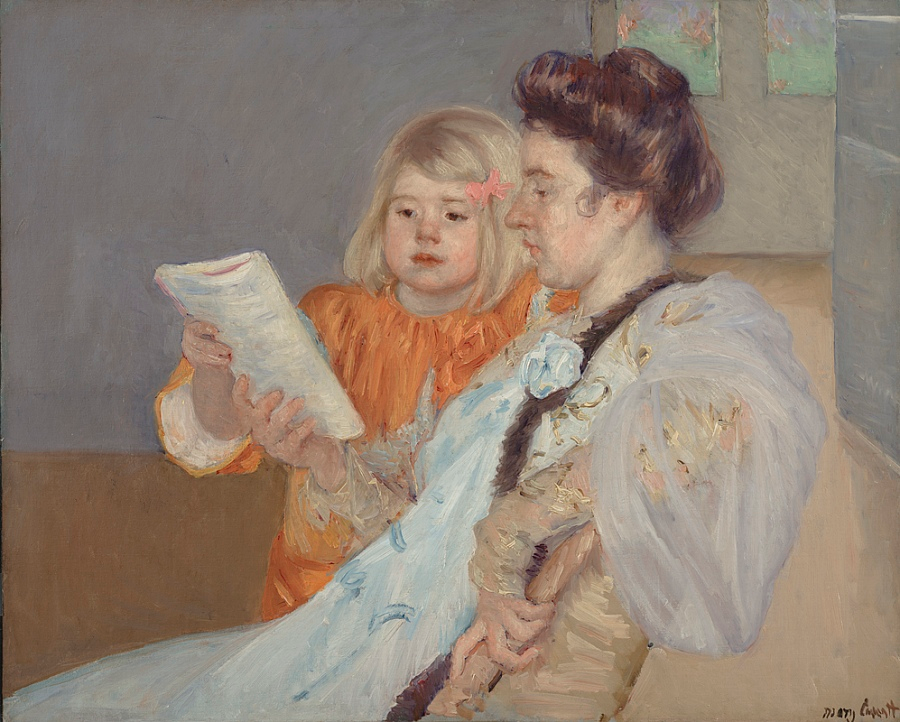
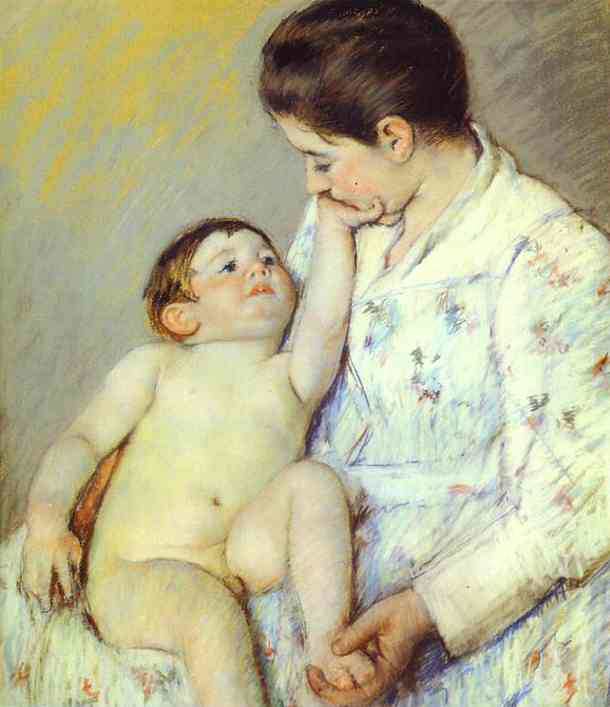
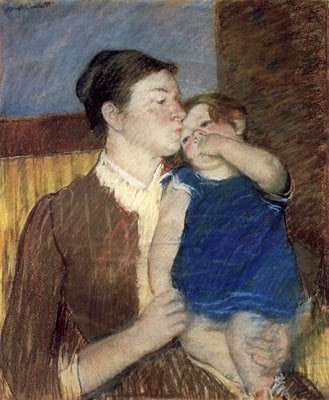
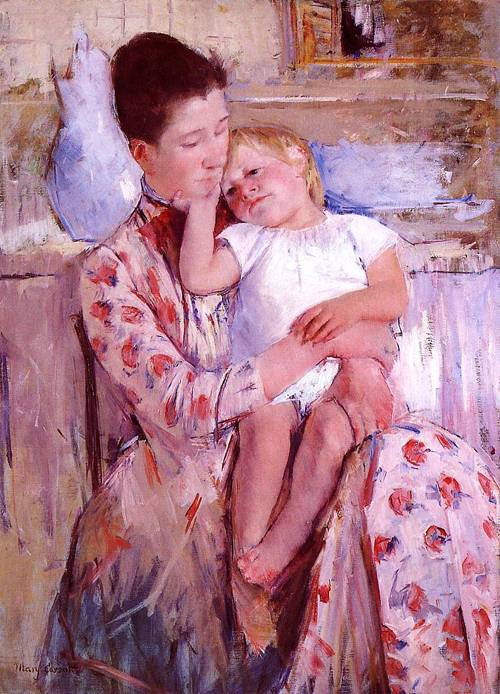
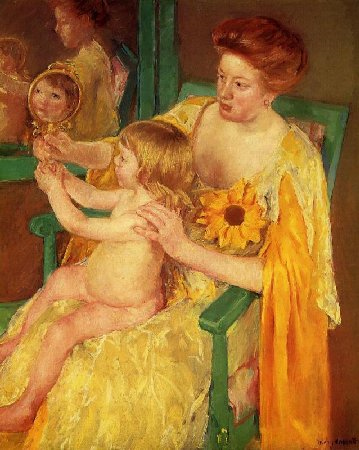
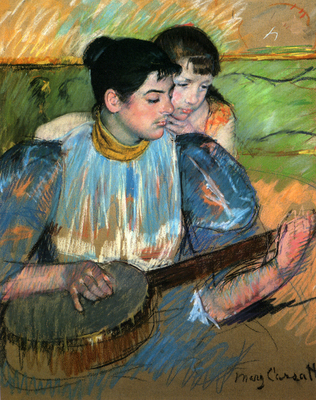
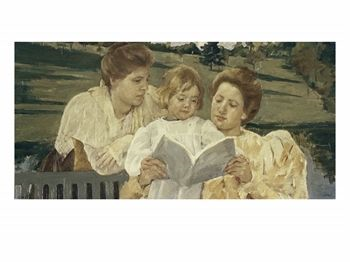
Footnotes
- Mary Cassatt’s famous painting that appeared in 1901 for public contemplation revealing feministic approach.
- A French history book that enables a student to understand the premises and outcomes of the French feminist movement.
- Getlein’s book of paintings and prints is extremely easy to read and the explanations and a bit of history about the paintings make it even more asked-for among the sophisticated art lovers.
- The article speculates on the issue of French women being too overwhelmed with the opportunity to involve in the public sphere: the advantages and disadvantages of this.
- Witzling characterized Cassatt as pseudo-feminist due to the wrongly-accepted paintings of hers.
- Nancy Mathews book A Retrospective is a wonderful opportunity for thirsty readers to know more about Cassatt through the letters the author includes, which makes the author too personal about Cassatt’s subject.
- Mathews, Nancy Mowll. “Cassatt: A Retrospective”. China: Hugh Lauter Levin Associates, Inc, 1990.
- Chessman Harriet’s book reveals the portrait of Cassat through her paintings.
- Neal Lisa’s book about French history and its impact on societal changes explores the vestiges of past. Here it is important to know the impact of Catholic Church on the issues observed in the paper as per feminist moods in the country of the late nineteenth century.
- Mike Venezia wrote multiple series of books for children to find out about art. His book “Mary Cassatt (Getting to Know the World’s Greatest Artists)” is brilliant in terms of educating kids about famous painter and her impact on Art History.
- Women’s role was overlooked as per Kelly Oliver and his book French Feminism reader that speculates on the issue why women neglected their roles.